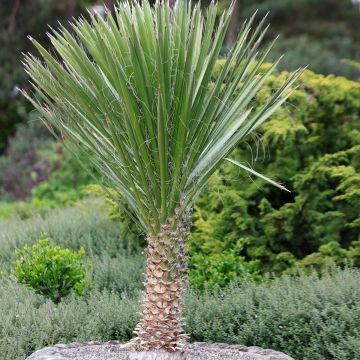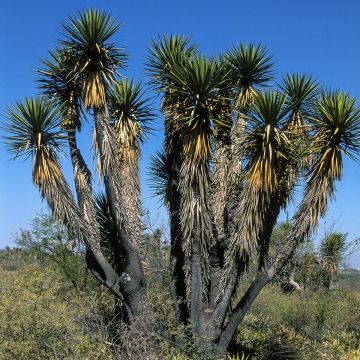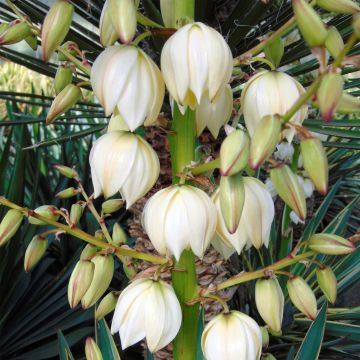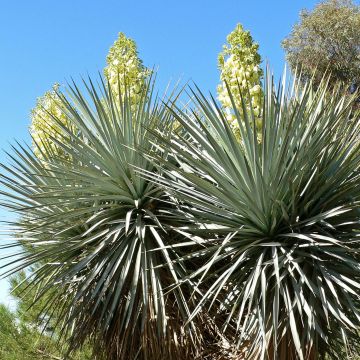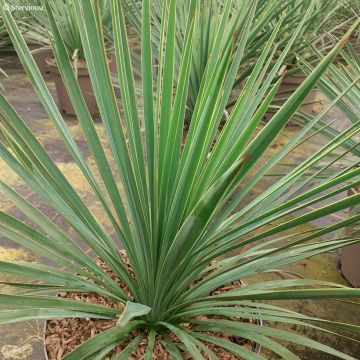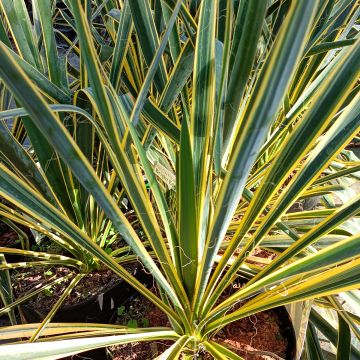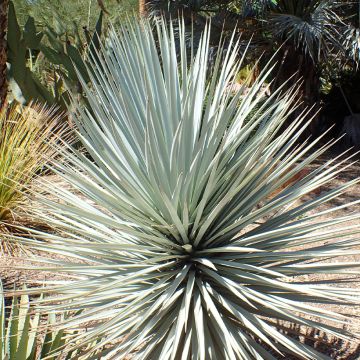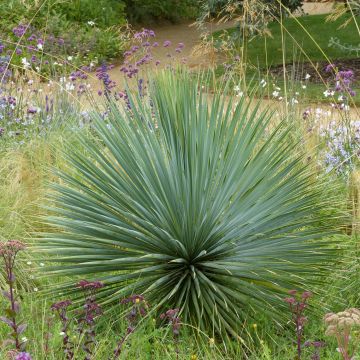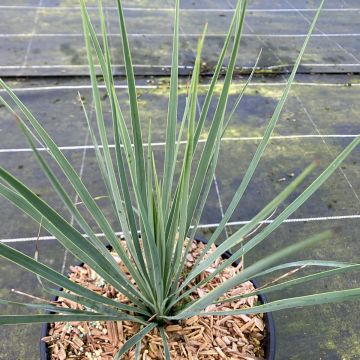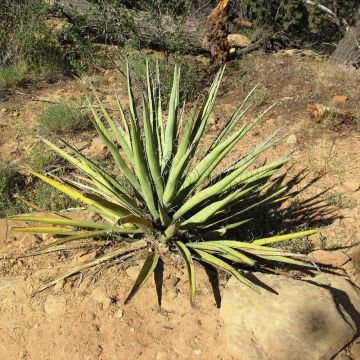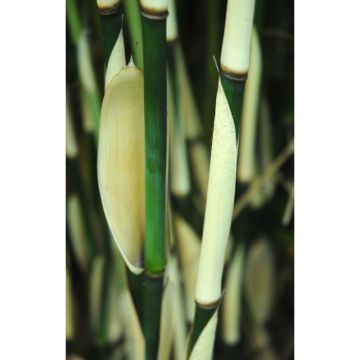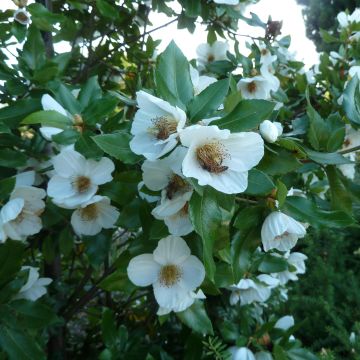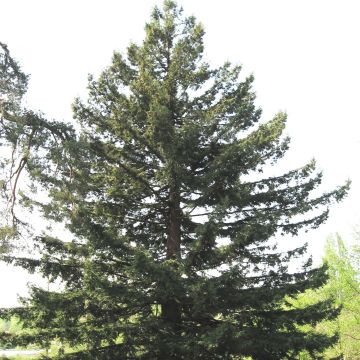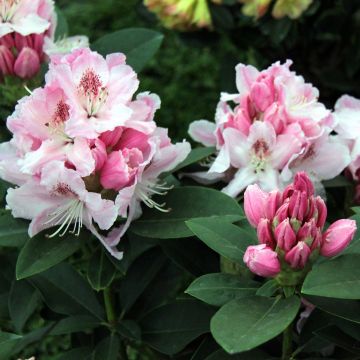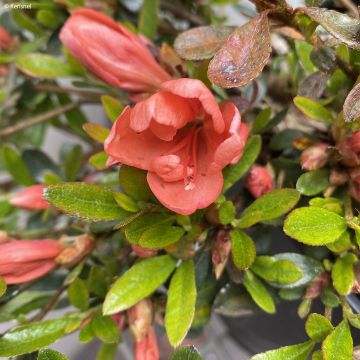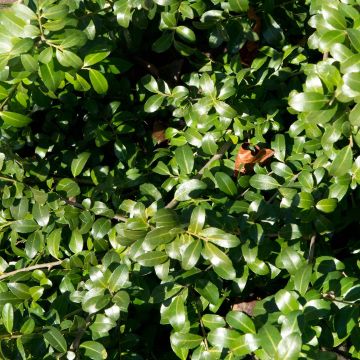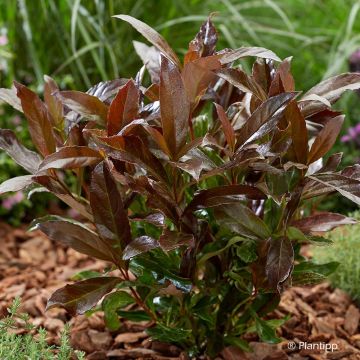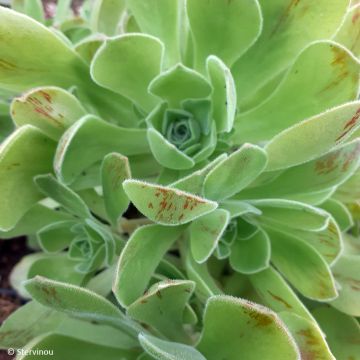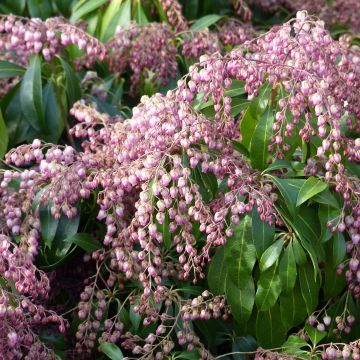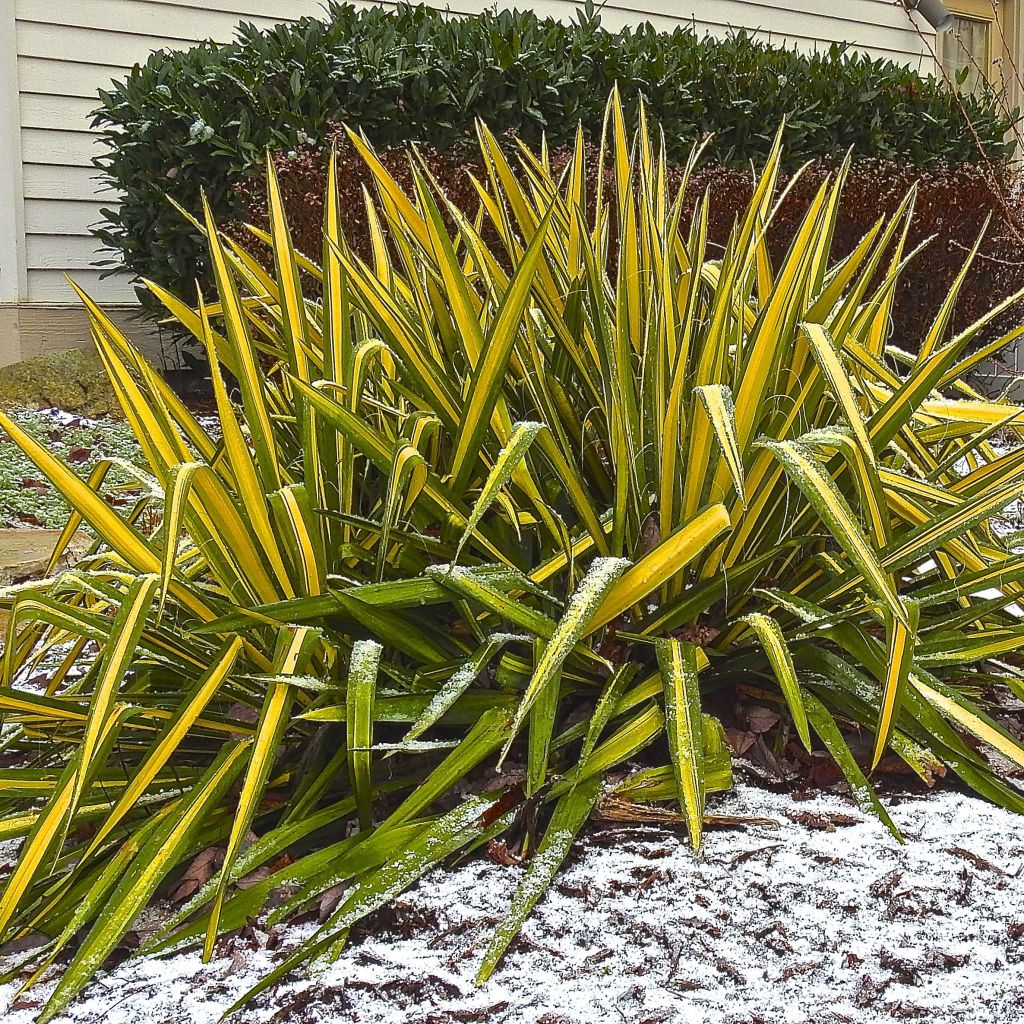

Yucca flaccida Golden Sword
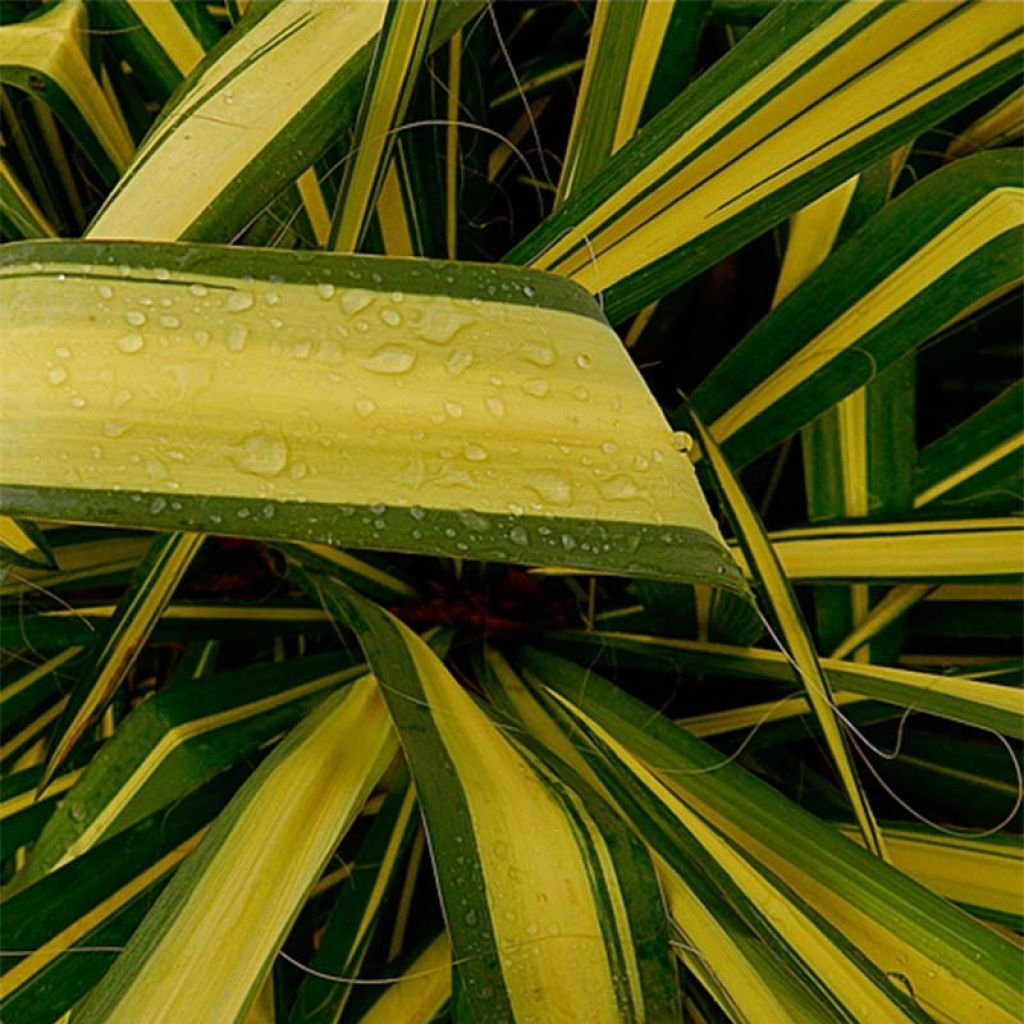

Yucca flaccida Golden Sword
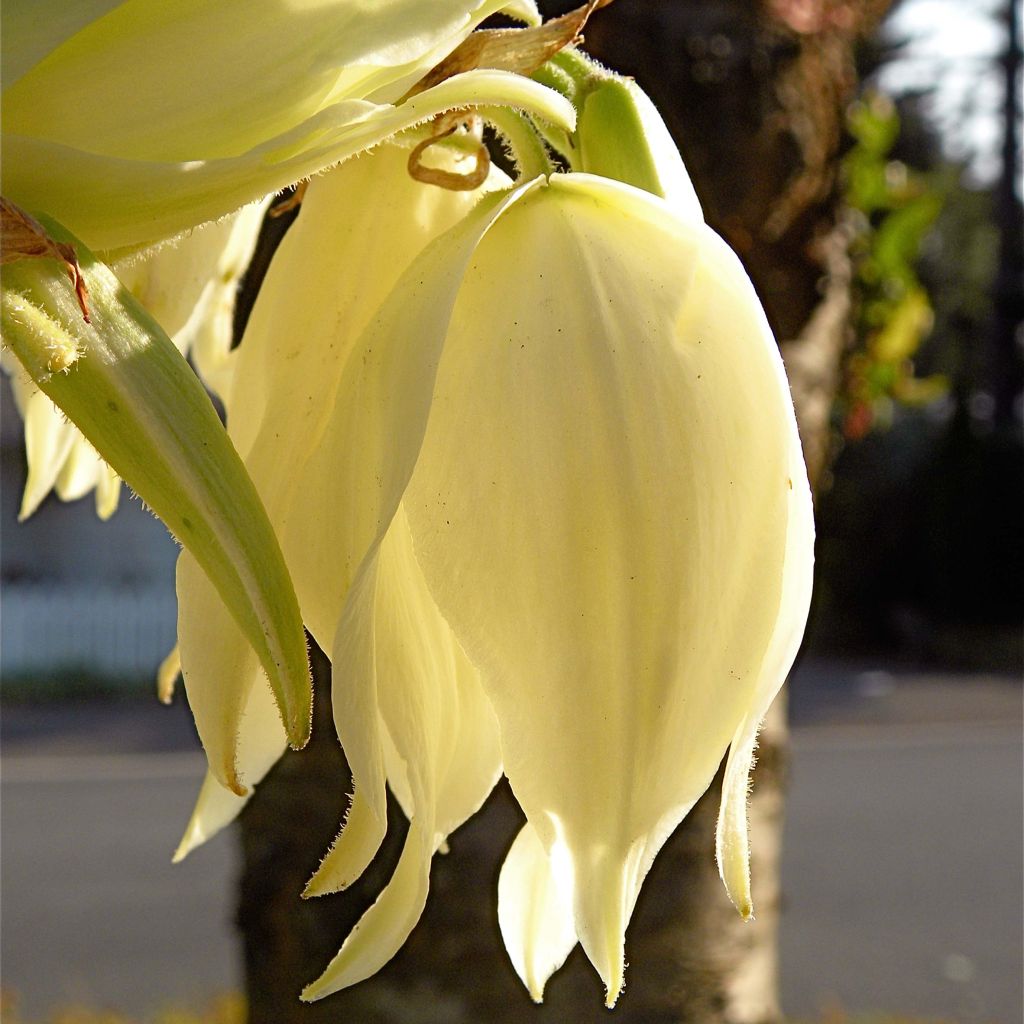

Yucca flaccida Golden Sword
Yucca flaccida Golden Sword
Yucca flaccida Golden Sword
Needle Palm
Well-packaged young plant and with size in accordance with the description. Now we just need to see the 'hardening' and 'acclimatation'.
THIERRY L., 27/11/2017
This item cannot be shipped to the selected country
Delivery charge from €5.90
More information
Schedule delivery date,
and select date in basket
This plant carries a 24 months recovery warranty
More information
We guarantee the quality of our plants for a full growing cycle, and will replace at our expense any plant that fails to recover under normal climatic and planting conditions.
From €5.90 for pickup delivery and €6.90 for home delivery
Express home delivery from €8.90.


Does this plant fit my garden?
Set up your Plantfit profile →
Description
Yucca flaccida Golden Sword is a variety that is both very hardy and very ornamental due to its beautiful yellow foliage edged with blue-green. It stands out from afar in flower beds, especially in winter in a landscape devoid of other plants, despite its relatively modest size. It develops a basal rosette of large variegated leaves bordered with whitish filaments, whose warlike appearance excels in summer with the magic of its magnificent flowers, in the form of a tall stem bearing large ivory-white bells. It will not disappoint, even if it does not appreciate excessive humidity in spring, which can damage its beautiful foliage. Plant it in a rock garden, on a slope, or in a pot on the terrace!
Yucca flaccida is a plant of the agave family. This North American botanical species is native to the western part of North Carolina and extends to the north of Alabama in the Appalachians. It is distinguished from the filamentosa species mainly by its soft and smooth leaves on both sides. Generally lacking a trunk, this yucca forms several stems that bear rosettes of long and narrow leaves, tapering at their ends. Its growth is initially slow but once it hits its top speed will reach 20 to 30 cm (8 to 12 in) per year.
The Golden Sword variety develops rosettes of approximately 70 cm (28 in) in height, and very bright yellow leaves edged with blue-green and bordered by the characteristic filaments of the species. Each rosette has about sixty smooth and quite flexible leaves, measuring 50 to 60 cm (20 to 24 in) in length and ending in a small sharp spine. The floral stems appear in early summer, sometimes later or earlier depending on the climate, on specimens that are several years old. The flowers, resembling tulips in size and shape, are creamy white and appear on a green and robust floral stem that branches into a panicle. They are oriented downwards. The rosette dies after flowering, giving rise to the emergence of other small juvenile rosettes at the base of the plant.
Very hardy, with a strong rhizome, Yucca flaccida Golden Sword is among the easiest varieties to grow. It will thrive in any well-drained soil, even dry and poor soil or in an arid situation. It should be kept away from pathways and young children due to its pointed leaves which can be dangerous. This plant is ideal for structuring a large rock garden, or for brilliantly occupying the centre of an exotic flower bed. It can be planted alone or paired with Puya caerulea on an arid slope, Agave americana, the prickly pear cactus, hardy candelabra cacti (Cleistocactus strausii, Cylindropuntia imbricata), and hardy aloes. It can also be placed in a very large pot on the terrace, right next to a banana tree or Tetrapanax, choosing a sheltered spot in full sun.
The flower petals are edible: they can be served as a garnish or prepared as fritters. The floral stem, before the flowers appear, can also be cooked and consumed like asparagus.
Report an error about the product description
Yucca flaccida Golden Sword in pictures
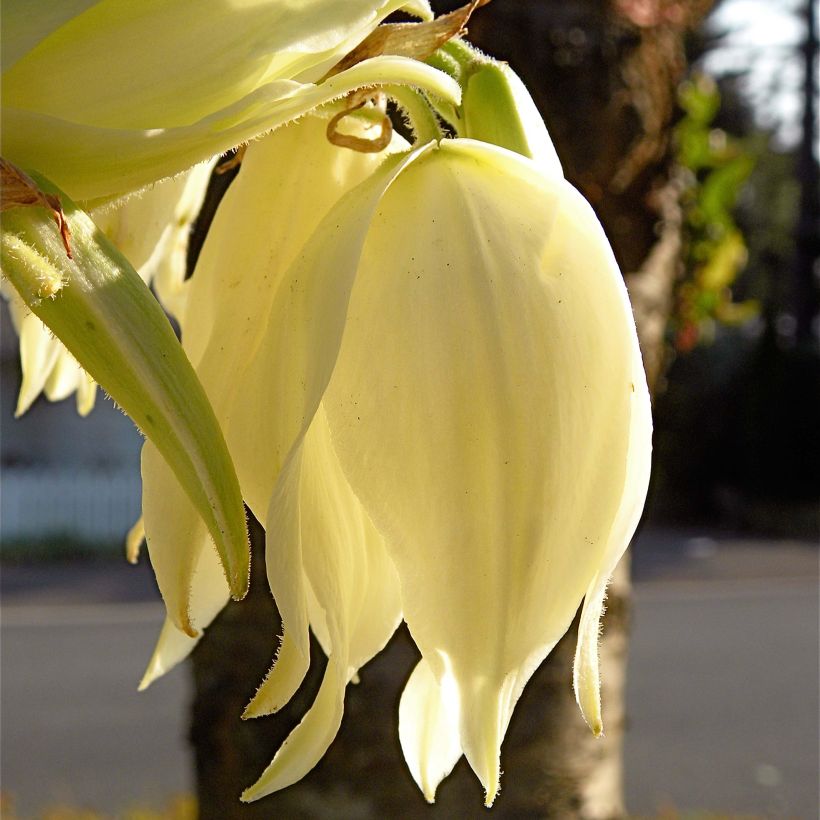

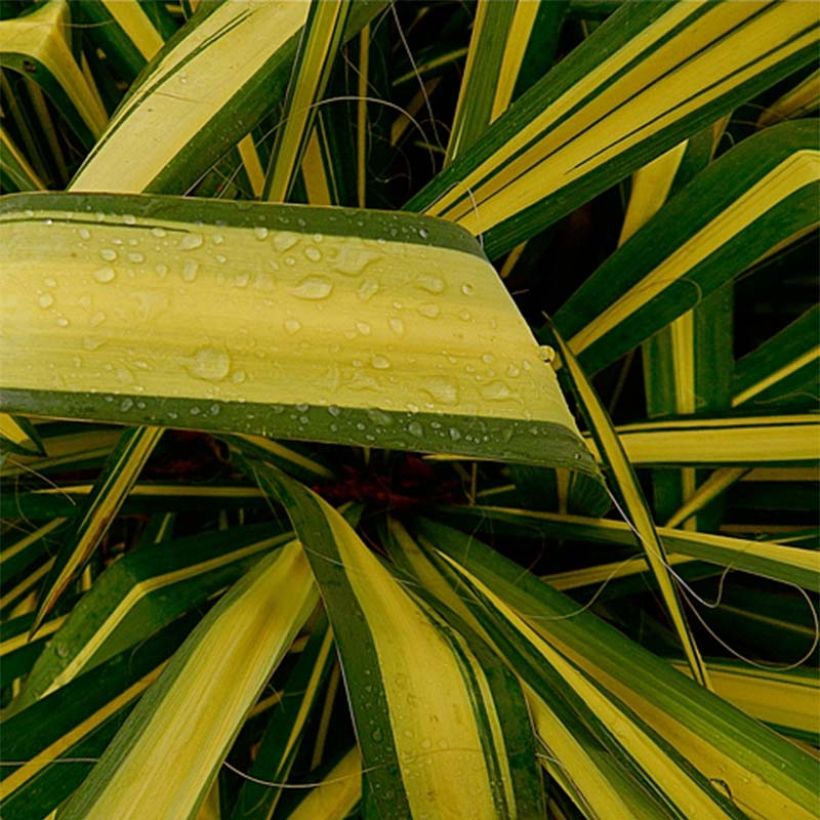

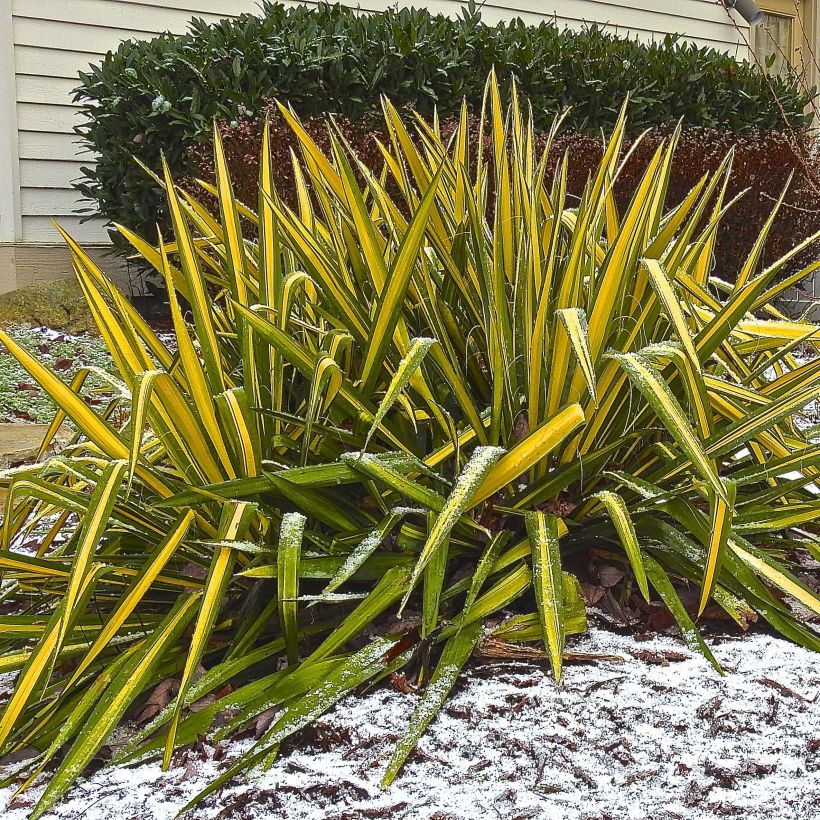

Plant habit
Flowering
Foliage
Botanical data
Yucca
flaccida
Golden Sword
Agavaeae
Needle Palm
North America
Other Yucca
Planting and care
Plant Yucca flaccida Golden Sword in spring or autumn, in a very sunny location. An adult specimen will withstand brief frosts of around -20 °C (-4 °F). In mild climates, it is preferable to plant it in autumn, especially in areas with hot and dry summers. This species does not tolerate excess humidity, especially when combined with cold: plant it in well-drained soil, ideally in a large rock garden, a raised bed with gravel-enriched soil, or a rocky slope. However, it is not picky about soil pH, which can be slightly acidic, sandy, stony, or even slightly calcareous. It tolerates poor soil, but its growth will be slightly faster in slightly fertile soil. Monitor watering during the first 2 years, especially during hot and dry periods. Remove faded stems.
If your Yucca looks beautiful but does not flower, it is probably too young, or has only been growing in your garden for 3 or 4 years. Indeed, it seems that this plant takes time to establish itself and only blooms after 8 years. After that, depending on sunlight and climate, it will bloom every year, or every 2 or 3 years.
Propagation:
Yucca can be easily propagated by stem cuttings. It is worth noting that plants from cuttings produce fewer roots than those from seeds, making them susceptible to strong winds and less resistant to drought in hot climates.
Fertilisation in yuccas:
In their countries of origin, Yucca flowers are pollinated only by a few species of tiny primitive moths without proboscises that live in symbiosis with the plant, such as Prodoxus. The female of these moths carries the pollen grains from one flower to the pistil of another. She lays a few eggs at the base of the flower. The young caterpillars feed on some of the seeds. Since Prodoxus is not part of our native fauna, most yuccas grown in our gardens never produce fruits. Only Yucca aloifolia is capable of doing so because its pollination does not depend on the presence of these micromoths.
Planting period
Intended location
Care
-
, onOrder confirmed
Reply from on Promesse de fleurs
Evergreen shrubs
Haven't found what you were looking for?
Hardiness is the lowest winter temperature a plant can endure without suffering serious damage or even dying. However, hardiness is affected by location (a sheltered area, such as a patio), protection (winter cover) and soil type (hardiness is improved by well-drained soil).

Photo Sharing Terms & Conditions
In order to encourage gardeners to interact and share their experiences, Promesse de fleurs offers various media enabling content to be uploaded onto its Site - in particular via the ‘Photo sharing’ module.
The User agrees to refrain from:
- Posting any content that is illegal, prejudicial, insulting, racist, inciteful to hatred, revisionist, contrary to public decency, that infringes on privacy or on the privacy rights of third parties, in particular the publicity rights of persons and goods, intellectual property rights, or the right to privacy.
- Submitting content on behalf of a third party;
- Impersonate the identity of a third party and/or publish any personal information about a third party;
In general, the User undertakes to refrain from any unethical behaviour.
All Content (in particular text, comments, files, images, photos, videos, creative works, etc.), which may be subject to property or intellectual property rights, image or other private rights, shall remain the property of the User, subject to the limited rights granted by the terms of the licence granted by Promesse de fleurs as stated below. Users are at liberty to publish or not to publish such Content on the Site, notably via the ‘Photo Sharing’ facility, and accept that this Content shall be made public and freely accessible, notably on the Internet.
Users further acknowledge, undertake to have ,and guarantee that they hold all necessary rights and permissions to publish such material on the Site, in particular with regard to the legislation in force pertaining to any privacy, property, intellectual property, image, or contractual rights, or rights of any other nature. By publishing such Content on the Site, Users acknowledge accepting full liability as publishers of the Content within the meaning of the law, and grant Promesse de fleurs, free of charge, an inclusive, worldwide licence for the said Content for the entire duration of its publication, including all reproduction, representation, up/downloading, displaying, performing, transmission, and storage rights.
Users also grant permission for their name to be linked to the Content and accept that this link may not always be made available.
By engaging in posting material, Users consent to their Content becoming automatically accessible on the Internet, in particular on other sites and/or blogs and/or web pages of the Promesse de fleurs site, including in particular social pages and the Promesse de fleurs catalogue.
Users may secure the removal of entrusted content free of charge by issuing a simple request via our contact form.
The flowering period indicated on our website applies to countries and regions located in USDA zone 8 (France, the United Kingdom, Ireland, the Netherlands, etc.)
It will vary according to where you live:
- In zones 9 to 10 (Italy, Spain, Greece, etc.), flowering will occur about 2 to 4 weeks earlier.
- In zones 6 to 7 (Germany, Poland, Slovenia, and lower mountainous regions), flowering will be delayed by 2 to 3 weeks.
- In zone 5 (Central Europe, Scandinavia), blooming will be delayed by 3 to 5 weeks.
In temperate climates, pruning of spring-flowering shrubs (forsythia, spireas, etc.) should be done just after flowering.
Pruning of summer-flowering shrubs (Indian Lilac, Perovskia, etc.) can be done in winter or spring.
In cold regions as well as with frost-sensitive plants, avoid pruning too early when severe frosts may still occur.
The planting period indicated on our website applies to countries and regions located in USDA zone 8 (France, United Kingdom, Ireland, Netherlands).
It will vary according to where you live:
- In Mediterranean zones (Marseille, Madrid, Milan, etc.), autumn and winter are the best planting periods.
- In continental zones (Strasbourg, Munich, Vienna, etc.), delay planting by 2 to 3 weeks in spring and bring it forward by 2 to 4 weeks in autumn.
- In mountainous regions (the Alps, Pyrenees, Carpathians, etc.), it is best to plant in late spring (May-June) or late summer (August-September).
The harvesting period indicated on our website applies to countries and regions in USDA zone 8 (France, England, Ireland, the Netherlands).
In colder areas (Scandinavia, Poland, Austria...) fruit and vegetable harvests are likely to be delayed by 3-4 weeks.
In warmer areas (Italy, Spain, Greece, etc.), harvesting will probably take place earlier, depending on weather conditions.
The sowing periods indicated on our website apply to countries and regions within USDA Zone 8 (France, UK, Ireland, Netherlands).
In colder areas (Scandinavia, Poland, Austria...), delay any outdoor sowing by 3-4 weeks, or sow under glass.
In warmer climes (Italy, Spain, Greece, etc.), bring outdoor sowing forward by a few weeks.

































